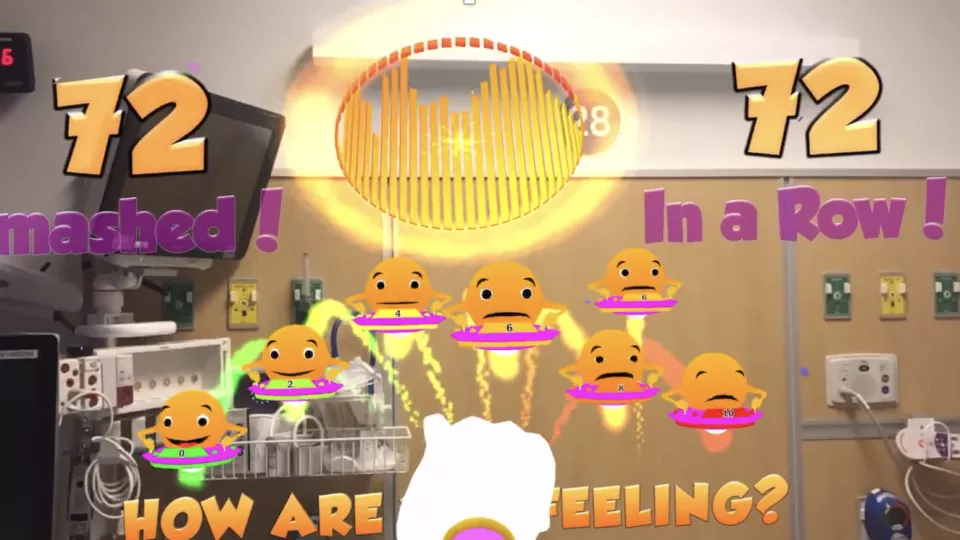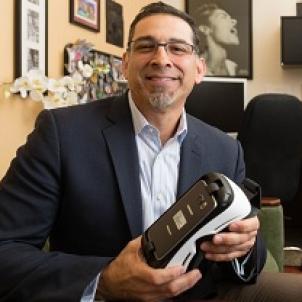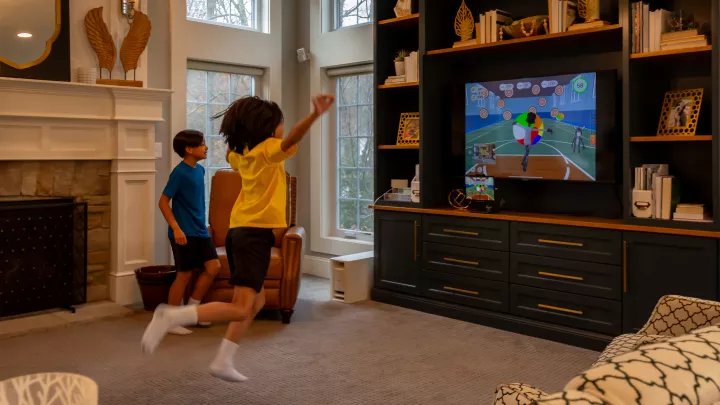
So Long, Needle-Phobia: Researchers Explore How Immersive Tech Helps Reduce Pain, Anxiety in Kids
It’s a health care tale as old as time: needle-based procedures can be just plain scary, no matter what age you are.
For kids with chronic conditions who visit the hospital multiple times per month, anxiety around these procedures might interfere with each visit. Ultimately, negative medical experiences can compound adverse childhood experiences (ACEs) which may lead to poor healthcare treatment adherence and worse health outcomes throughout life.
The latest research seeks to enhance the standard of care for anxious patients beyond administering medication to ease fear. Instead of prescribing Ativan for needle anxiety, the doctor might order virtual reality (VR) or augmented reality (AR) delivered software like Magic Mallet or BearBlast.
These interventions are just as whimsical as their names sound: A patient dons a VR or AR headset before their procedure, is immersed into a colorful, interactive game that engages their senses, and their pain and fear surrounding the procedure fade into the background.
The promising results of new research from Children’s Hospital Los Angeles scientists further validate these immersive tools as valuable layers to the current standard of care across venipuncture and anesthesia procedures.

VR/AR immersion reduces anxiety during venipuncture and anesthesia
Jeffrey Gold, PhD, Principal Investigator at the Biobehavioral Pain Lab at CHLA, has been pioneering pediatric research that explores the potential of VR and AR technologies for more than 20 years. Several randomized controlled trials at CHLA inform his team’s ongoing work, including two recently published studies.
The first study measured results from 252 patients receiving intravenous catheter placements and blood draws at CHLA. Before the start of their procedure, researchers invited half of the patients to put on a VR headset equipped with a specially designed game called BearBlast (developed by Applied VR), where the player used a single-hand controller to knock down teddy bears. The immersive nature of the VR game resulted in patients reporting lower pain levels and less anxiety. Further, patients with the highest anxiety sensitivity reported the highest levels of immersion and relief with the use of the VR system.
In the second study, Dr. Gold explored how engaging patients with AR could reduce fear around anesthesia before an operation. Before their procedure, children donned a pair of AR goggles—which use an iPhone to project images onto the patient’s field of vision—and played another single-handed game called Magic Mallet (developed by Miney Moe). Reports from both providers and patients noted lower anxiety and greater ease of falling asleep before the procedure.
What’s next
Dr. Gold’s research seeks to redefine these common medical experiences from anxiety-inducing to interactive, absorbing, and even fun.

Ultimately, Dr. Gold and researchers hope to harness the power of immersive technologies across a wide variety of hospital settings. Currently, he is partnering with CHLA, national and international collaborators to investigate the use of VR and AR (known collectively as extended reality or XR) to reduce or eliminate the need for routine general anesthesia for several medical procedures including transnasal endoscopy and interventional radiology.
Additionally, the team hopes to dive deeper into how this type of intervention can help patients from different backgrounds, explore whether adding additional levels of immersion beyond sight and sound could increase the therapeutic benefit, and compare outcomes of various XR approaches.
“The plan is to have XR technologies readily available to reduce distress, pain and anxiety with a variety of typically painful medical procedures while increasing patient, family and health care provider satisfaction,” Dr. Gold shares.


